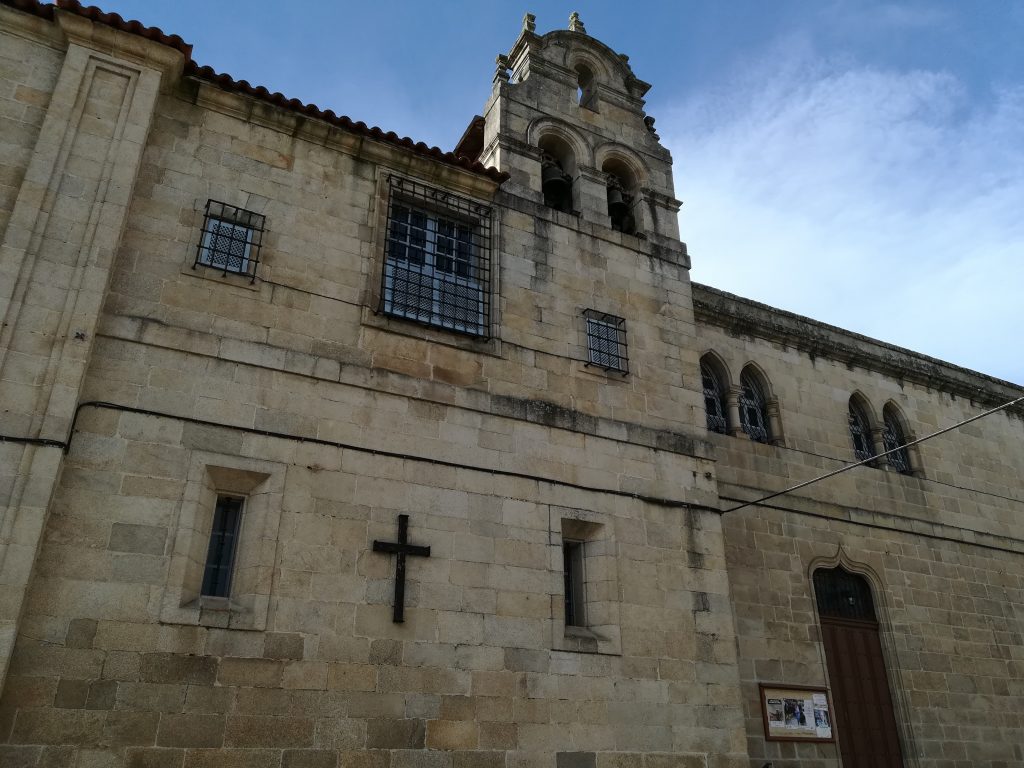Monforte de Lemos
Capital of Ribeira Sacra
This city, which earned its title from King Alfonso XII in 1885, is the capital of Ribeira Sacra and the most populous town in the region.
Monforte de Lemos is located in the southern part of the province of Lugo and serves as the capital of the Terra de Lemos region, which includes five municipalities: Bóveda, Pantón, A Pobra do Brollón, O Saviñao, Sober, and Monforte de Lemos.
What to Do in Monforte de Lemos?
Ready for a "healthy routes" walk?
Shopping in Monforte de Lemos?
How about tapas, wine, or both?
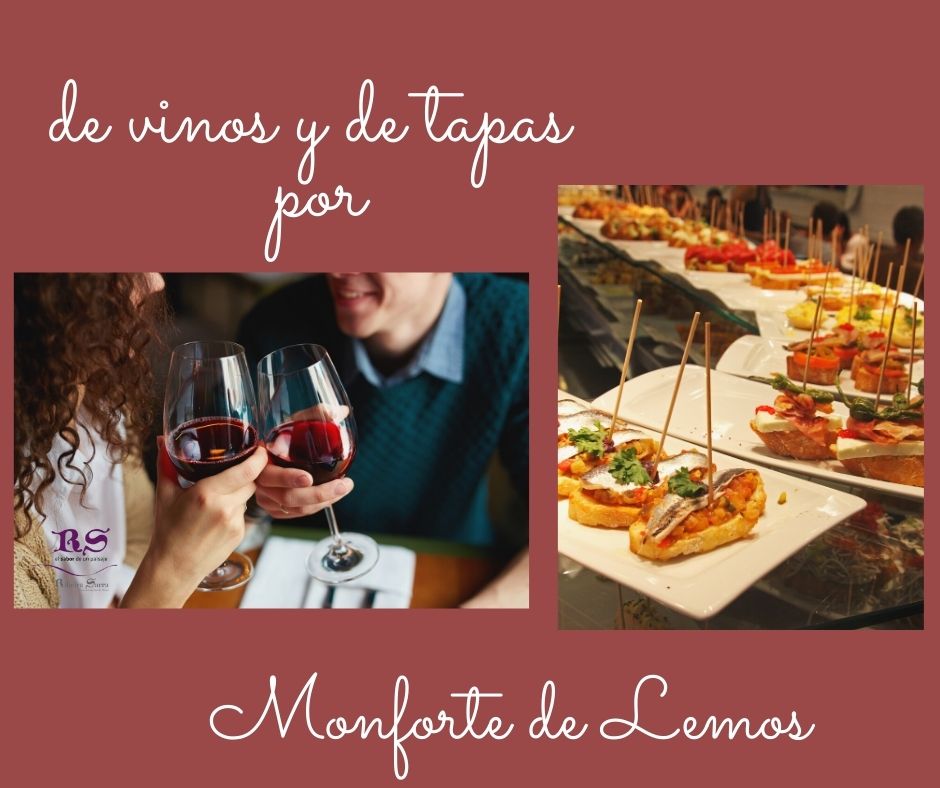
If you simply want to enjoy some wine, you are in the right place. We are in the heart of the Ribeira Sacra designation of origin (D.O.). Do not hesitate to ask for a Mencía if you prefer red or a Godello if you prefer white. Delight in the fruit of our heroic viticulture.
Visit the Ribeira Sacra Wine Interpretation Center to gain insight into the fascinating world of wine: its history and craftsmanship.
This building, originally constructed in 1583 as a hospital, became the Wine Center in 2009. Inside, you’ll find the offices of the Regulatory Council of the Ribeira Sacra D.O.
How about exploring the narrow streets?
While wandering through the streets of Monforte de Lemos, you will come across the old Jewish quarter and medieval neighborhood.
The Jews of Monforte de Lemos lived in harmony with the rest of the population. Many of them were scholars or artisans, and this is evident in their choice of residences in streets like Falagueira, Zapaterías, Pescaderías, and Plaza de España.
The importance of the Jewish community in Monforte de Lemos was such that this city, along with Tui and Ribadavia, belongs to the Network of Jewish Quarters in Spain, Caminos de Sefarad.
One of the most prominent houses you can see is the Gaibor family house.
On Pescaderías Street, you will find the old medieval jail.
Take a walk along the Cabe River
This small river with calm waters passes through Monforte, offering a peaceful and enjoyable space for everyone.
The surroundings are designed for pleasant walks along the river’s slow course, and in the summer, you can enjoy evenings on the terraces and in the establishments by the river.
The Fluvial Club also offers water activities such as boat rentals for up to 8 people or kayaks.

You will encounter a large number of ducks and geese along the riverbanks, providing picturesque photo opportunities.
Continuing our walking tour, we reach the Old Bridge. It is said to have Roman origins, although it was rebuilt in the 16th century.
This beautiful bridge with six arches connects the Clarisas Museum with the commercial area of the historic center.
From the bridge, you can enjoy magnificent views of the Escolapios and, if you turn around on the pedestrian bridge, you can capture beautiful photos of the bridge’s reflection in the Cabe River.
What to Visit in Monforte de Lemos
The College of Our Lady the Old or the Piarists' College
Known as the Galician Escorial, it is a “herreniano-style” building with two symmetrical wings and a central church.
Its construction began in 1593 under Cardinal Rodrigo de Castro.
Inside, there is an art gallery with works by El Greco (“The Apparition of the Virgin with the Child to Saint Lawrence” and “Fray León Meditating on Death”).
Notable in the church is the large altarpiece by the Galician sculptor Francisco de Moure.
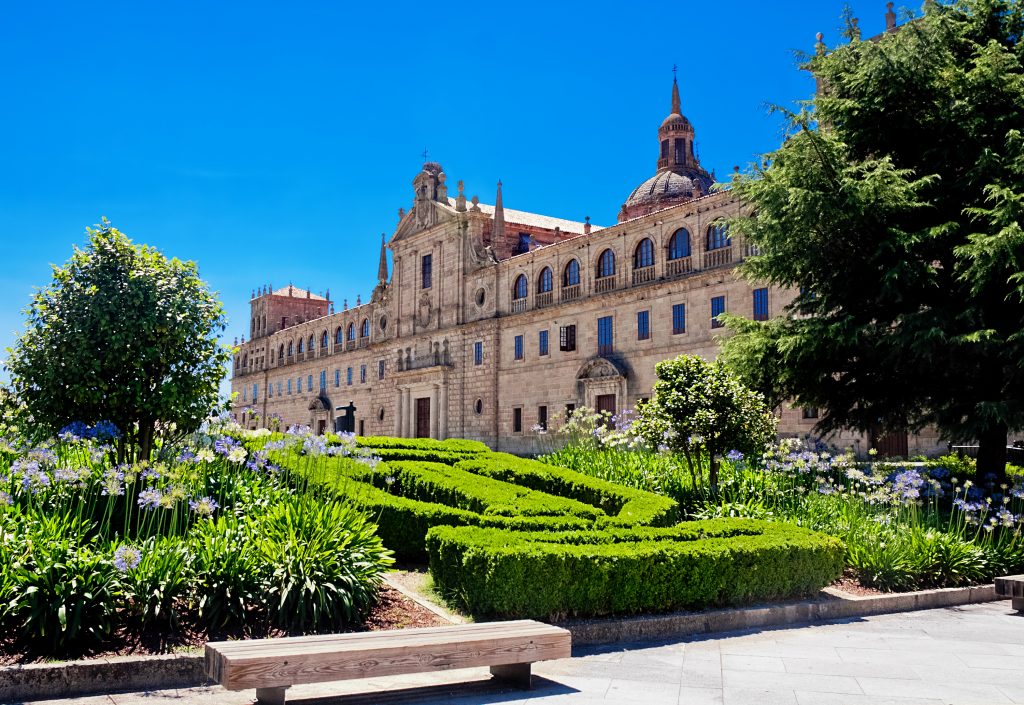
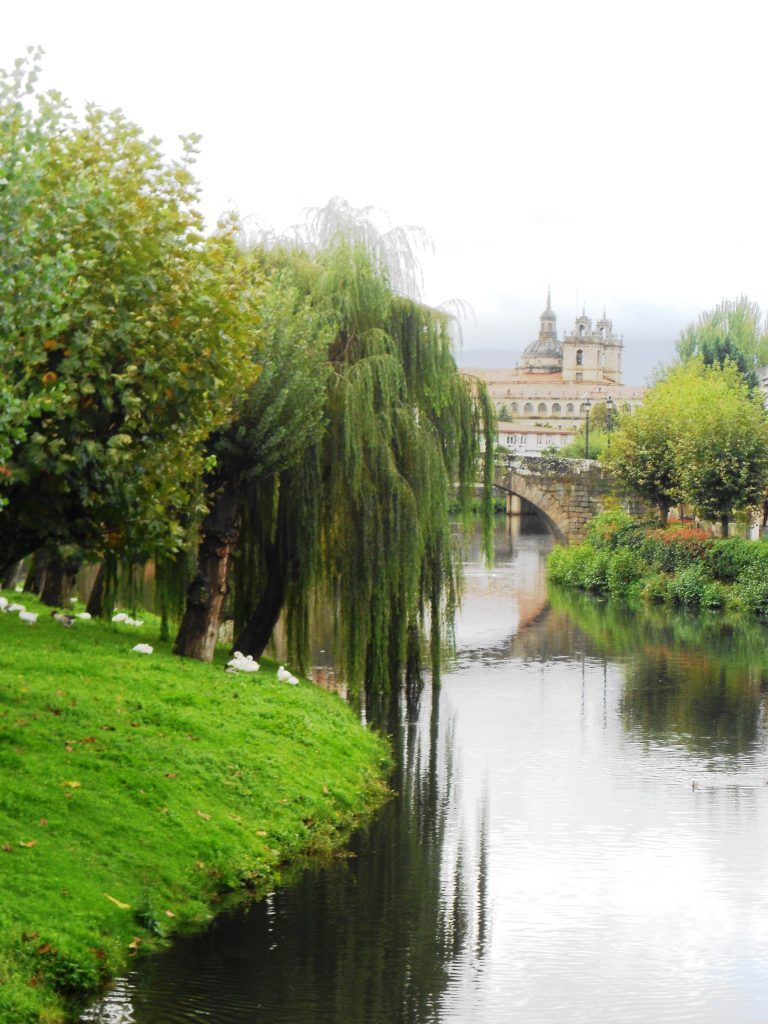

The Homage Tower:
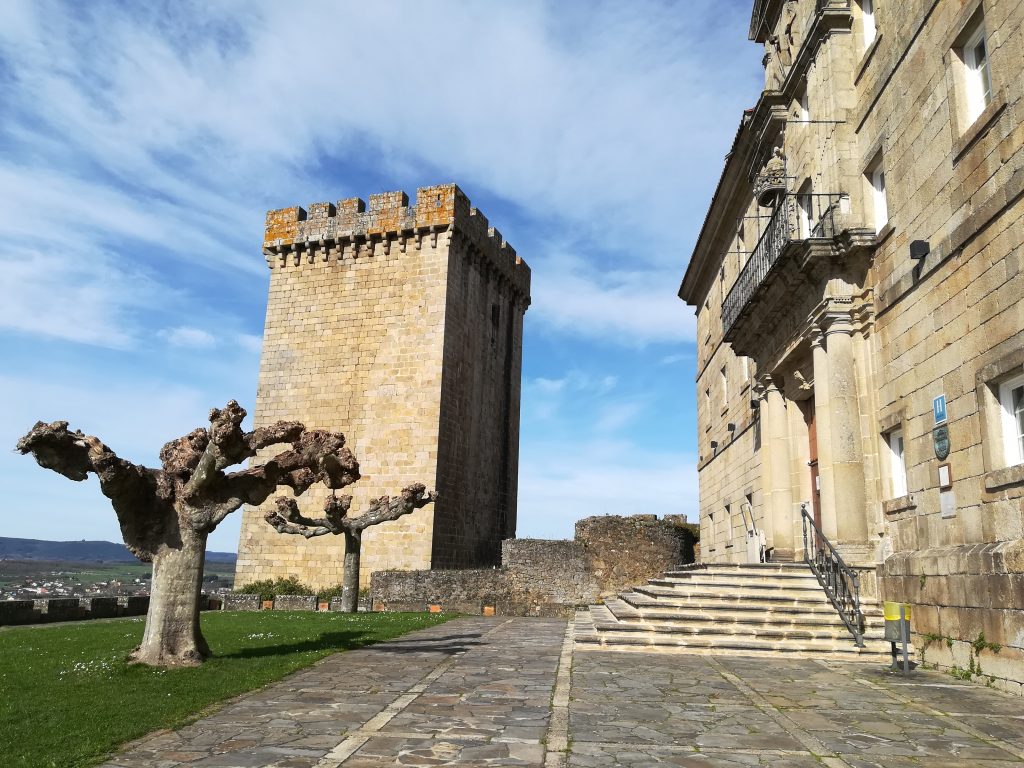
If you ascend to the highest part of Monforte de Lemos, you will encounter the Homage Tower.
This tower is the city’s landmark and can be seen from many kilometers away.
It was built between the 13th and 15th centuries, standing at a height of 30 meters, with sides measuring 13 meters and walls that are 3 meters thick.
From its battlements, you can admire the entire Lemos Valley and its surroundings.
The Palace of the Counts of Lemos
Built in the 16th century as the residence of the counts, it was reconstructed in the 17th century after a major fire.
Today, it is part of the Parador de Monforte de Lemos.
The Monastery of San Vicente del Pino
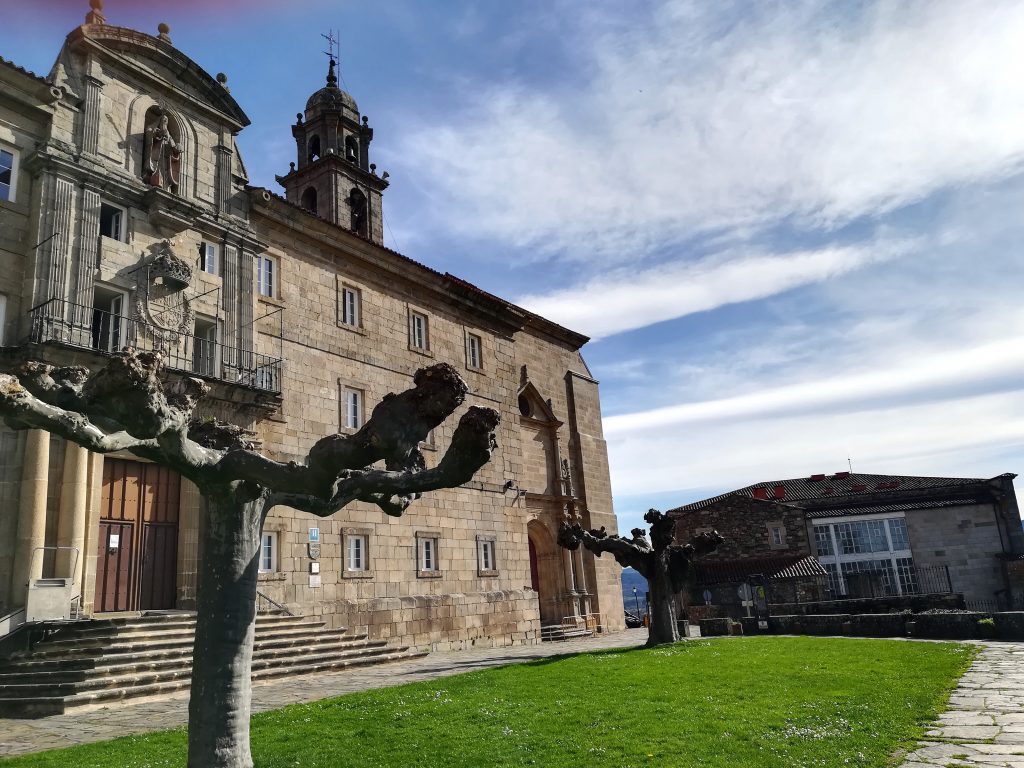
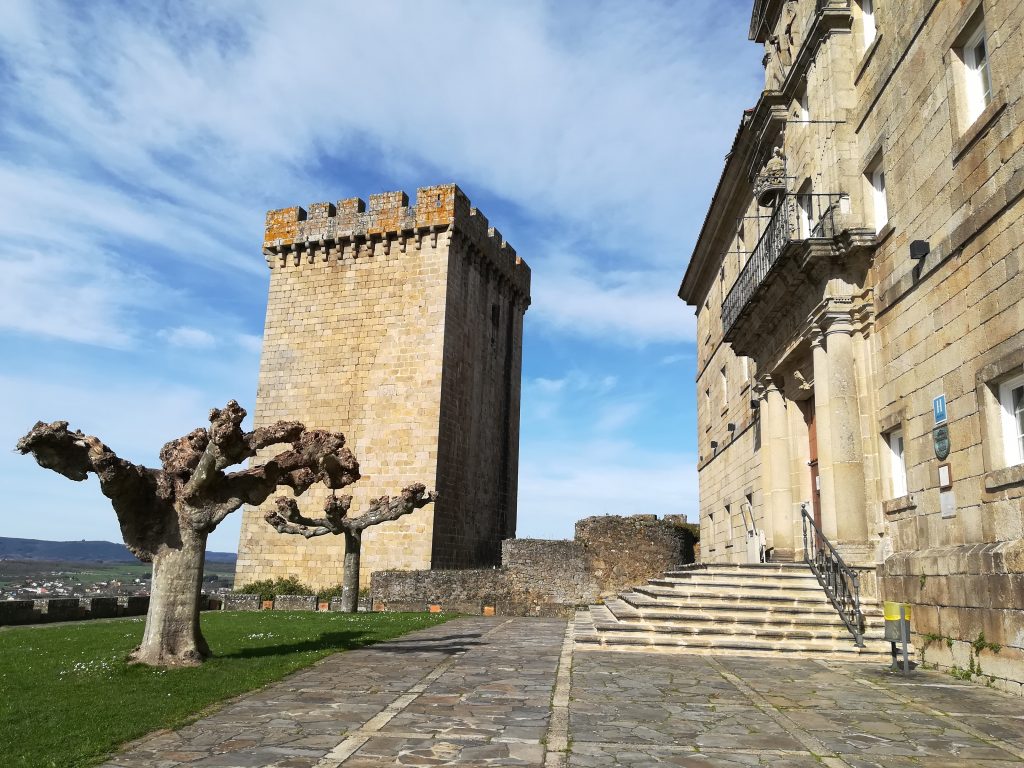
Museum of the Clarisas Mothers
Our journey takes us to one of Spain’s finest museums of sacred art: the Museum of the Clarisas Mothers.
It was founded in the 17th century by the Counts of Lemos, they donated their private collection, including some reliquaries collected during their viceroyalty in Naples.
Among the most notable pieces are a “Dead Christ” by Gregorio Fernández and Renaissance Italian goldsmithing pieces.
Lodeiro Museum
Very close to Monforte de Lemos’s narrowest house, we find the Lodeiro Museum, where 300 hand-carved stone and wood works by sculptor Darío Lodeiro are exhibited. Notable among them are the wooden sculptures of Don Quixote and Sancho.
Dollhouses Museum
Just outside Monforte de Lemos, near the train station, is the peculiar Dollhouses Museum.
This small museum of miniature craftsmanship, featuring 24 pieces in a 1:12 scale, showcases the work of Josela Fernández and Francisco García-León.
Among other pieces, you can view different rooms of the Pazo Molinos de Antero de Monforte.
Railway Museum
About a 3-minute drive away is the Railway Museum, known as MUFERGA, the Galician railway museum, located in a former locomotive workshop and garage.
Inside, you can explore everything from the control room to a room dedicated to various clocks.
One of the most admired machines on display is the steam-powered “Mikado” 141F 2111 locomotive.
Notable is the “Railway Roundhouse,” declared a “prominent building of European industrial heritage” by the European Union. It is the largest in Spain and the only one in Galicia. There is also a small mini-train ride for the little ones.

Molinos de Antero Palace
About a 5-minute drive from the center of Monforte de Lemos is the Molinos de Antero Palace.
It is an 18th and 19th-century building with French-style architecture and Italian pictorial decoration. It was once a tax collection point and has a set of peepholes, some of them hidden from view.
Tor Palace
About a 12-minute drive from the center of Monforte de Lemos is the Tor Palace.
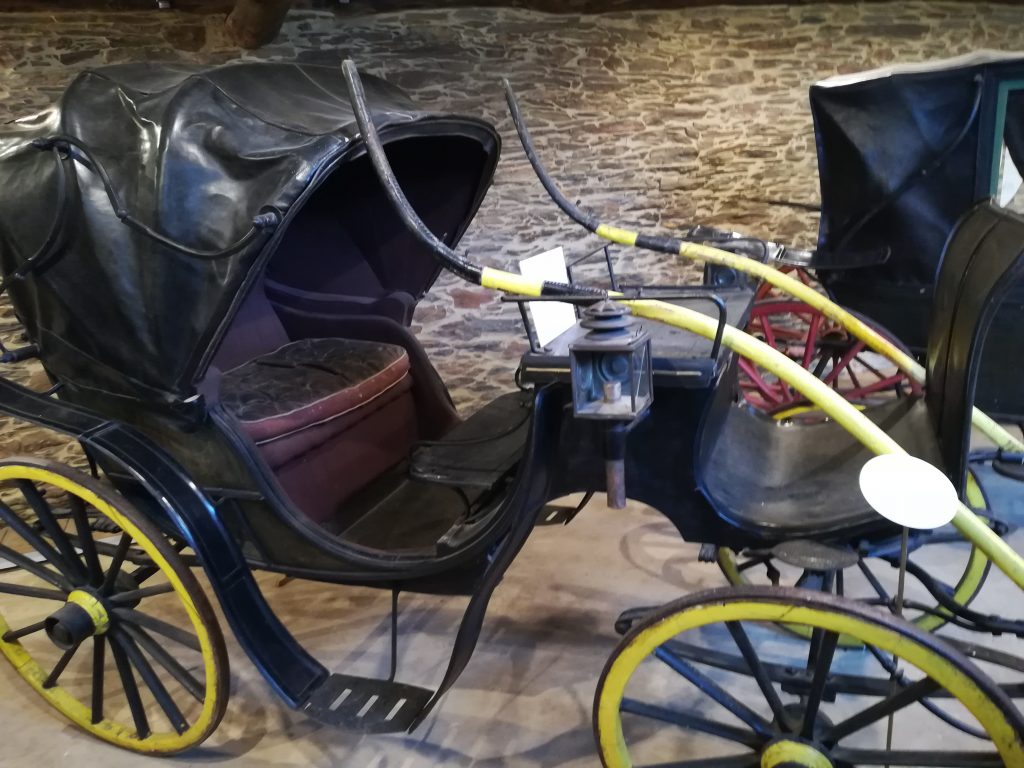
This 18th-century building houses furniture and objects necessary for life in a palace.
The house’s facilities include the winery, the oven, the carriage house (where you can find horse-drawn carriages), a dovecote, and a beautiful labyrinthine garden.
Inside, you will discover a small chapel, a hand-painted toilet, a harpsichord, an ivory chess set, and a geometric map of Galicia from 1845 by Domingo Fontán, a true marvel.
Romanesque Church of Santa María de Baamorto:
About 12 minutes from the center of Monforte de Lemos, you will find the small Romanesque church of Santa María de Baamorto.
The original Romanesque church’s only surviving part is its original single-nave layout, accessed through a Romanesque door.
The most noteworthy aspect of this church is its mural paintings from around 1560, by an anonymous author known as the Master of Nogueira, as he also painted the Nogueira de Miño paintings.
The paintings depict the “Bible of the Poor,” seeking visual representation of what is written in the Bible. These images are accompanied by brief text.
Duke's Viewpoint
We cannot forget the Duke’s Viewpoint, the only viewpoint in Monforte de Lemos overlooking the Sil River canyons.
This marvel is about a 20-minute drive from Monforte de Lemos.
From this viewpoint, you can admire the Sil River and its canyons in all their splendor. If you look down, you’ll see the Ponte de Abeleda pier, from which one of the catamarans that traverse the Sil departs.
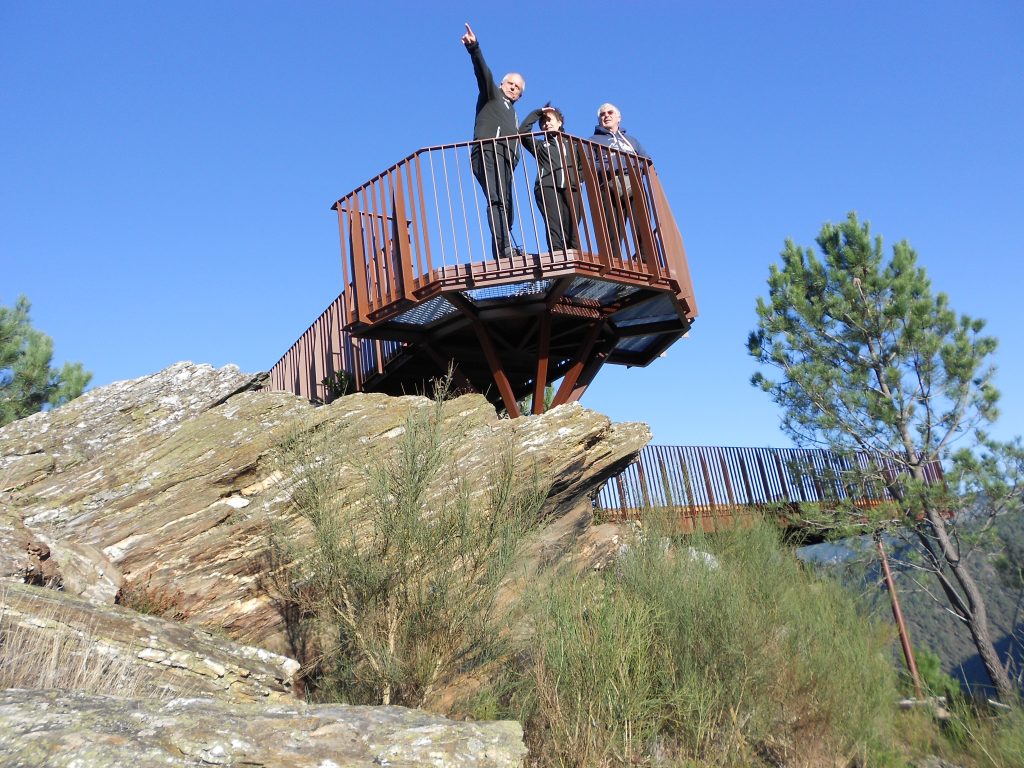
Monforte de Lemos - History
- The first inhabitants were the “Lemavos”, a Celtic tribe belonging to the "castro culture," who lived in hill forts, worshiped natural phenomena, and Celtic deities. The etymological evolution of the word Lemavos > lemaos > lemoos > lemos suggests the meaning "inhabitants of a clayey place.”
- The name Monforte comes from the Roman period, latin "Mons fortis.”
- In the 8th century, it was destroyed by the Moors.
- In medieval times, Monforte was a prime example of a fortified city. The benedictine community settled where the castro was located, and a Jewish colony, which engaged in commerce, lived on the slopes.
- In the 15th century, the Castro family obtained the city from the County of Lemos in perpetuity.
- In the 16th and 17th centuries, it reached its golden age under Cardinal Rodrigo de Castro Osorio (1523-1600), a Renaissance man who founded the College of Our Lady of the Old, and his nephew Pedro Fernández de Castro y Andrade (1576-1622), the 7th Count of Lemos, Viceroy of Naples, and President of the Councils of the Indies and Supreme Council of Italy; he was a patron of poets like Góngora, Quevedo, Lope de Vega, and Cervantes, who dedicated the second part of Don Quixote to him. He also founded the Santa Clara convent.
- The Homage Tower and the city walls were destroyed during the Irmandiña Revolt, which pitted the people against the nobility. Once the revolt was quelled, the rebels were forced to rebuild what was destroyed.
- During the Napoleonic occupation, it was attacked three times by the French in 1809.
- More recent history of Monforte de Lemos is closely linked to the railroad. In 1883, King Alfonso XII inaugurated the Madrid-A Coruña railway line, making Monforte de Lemos the most important railway junction in Galicia.
- With the arrival of the railroad, the city entered a period of growth, both economically and culturally. Political and cultural associations, magazines, and newspapers emerged. The “Irmandades da Fala” organisation had one of its headquarters in Monforte.
- After the dismantling of the railroad, which led to the relocation of the control centre to Ourense and the repair shop to León, a major economic decline occurred.
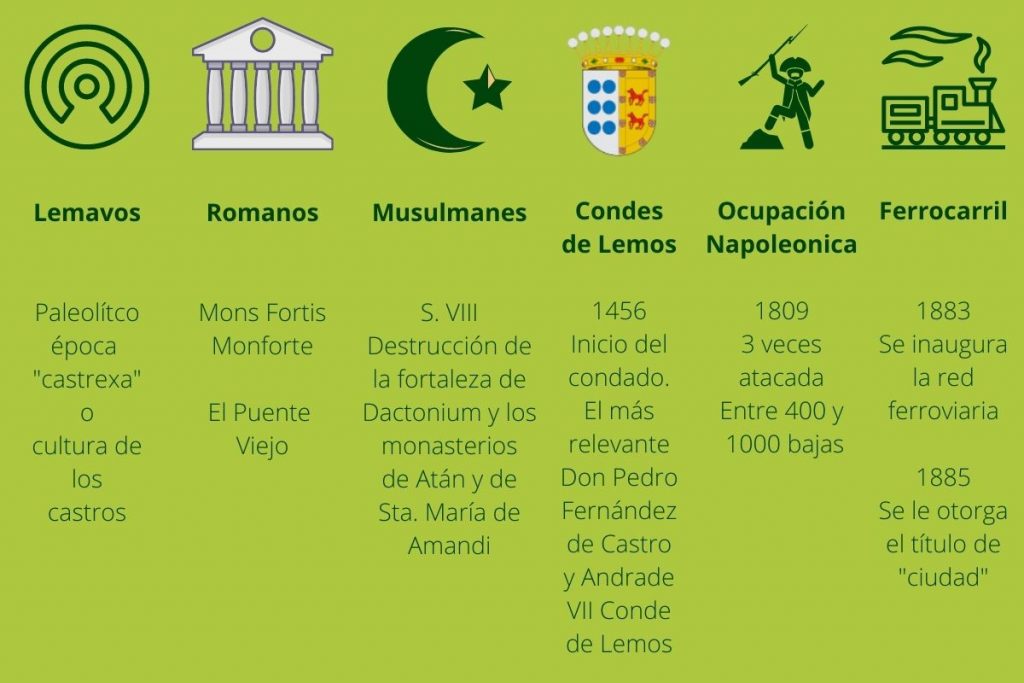
Monforte de Lemos - City Hall
The city consists of 4 urban parishes and 26 rural ones. In 2020, the city had 18,347 registered inhabitants, continuing the trend of a declining population.
28% of the population is over 65 years old, while 12.8% are under 18, indicating an aging population.
Monforte de Lemos: Festivals, Fairs, Pilgrimages
The patron saint festivals, in honor of the Virgin of Montserrat, take place from August 11th to 16th, with August 15th being a local holiday.
Other local holidays include Easter Tuesday and the feast of Saint Anthony on June 13th.
Fairs are held every 6th and 24th day of each month.
In August, various fairs take place, including the Book Fair, Art Fair (Artelemos), and a certified organic product market (Ágora Verde).
Other celebrations include:
Comadres and Compadres Thursday and Carnival Tuesday.
Medieval Fair
It takes place on the Saturday and Sunday of Easter, bringing together locals and visitors, all dressed in period costumes.
Craft and gastronomy stalls line the streets.
There are juggling, musical, and falconry performances.
The Escolapios dirt field hosts Medieval Jousts.
Continue exploring Monforte de Lemos

Hoy recorremos la senda de los codos de Belesar
La “Senda de los codos de Belesar” discurre por una antigua vía romana que une el monasterio de San Paio de Diomondi con San Pedro

Miradores Ribeira Sacra
En Arribeirados hemos querido escribir un post en el que aunaremos algunos de los más hermosos miradores de la Ribeira Sacra. Os explicaremos cómo son,

“Los Balcones de Madrid” o “Balcóns de Madrid” o “Balcóns dos Mouros”
“Balcóns de Madrid” en Parada de Sil. Uno de los Miradores del Sil más impresionantes y reconocidos. Los balcones de Madrid, pese a su nombre,


